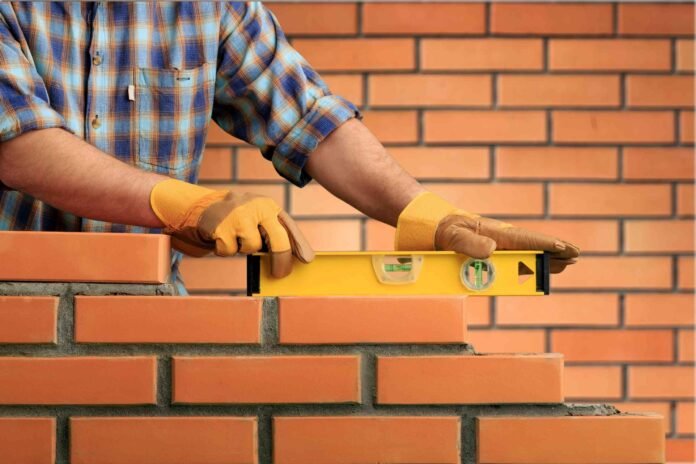Masonry is a vital part of the aesthetics and structural integrity of many buildings. Over time, however, even the most durable masonry will show signs of wear. Early detection of these signs and renovations can prevent costly repairs in the future.
Understanding Masonry
What is Masonry?
Masonry is the use of brick, concrete, stone and other materials to construct buildings. Masonry is one of the strongest forms of construction because these materials are held together by mortar. It is still susceptible to degradation due to many factors, even though it’s durable.
Masonry Types in Buildings
- Brickwork is Commonly found in historical and residential buildings.
- The stonework is often used both for structural and decorative purposes.
- Concrete blocks: Modern and widely used for commercial constructions.
Why Masonry Declines Over Time
Normal Wear and Tear
Age is a factor that affects the degradation of masonry. Even the most durable materials can be eroded over time, resulting in cracks and surface degrading.
Exposure of the Elements
The weather conditions, such as wind, rain and sun, play an important role in masonry material degradation. Water can seep through small cracks and expand in colder climates.
Use of poor construction techniques or materials
Some cases of improper construction or using inferior materials can accelerate masonry wear. In some cases, buildings that were not properly constructed may show signs of damage sooner than expected.
Signs that a building needs masonry renovation
Cracks in walls and foundations
The first and most obvious sign of masonry damage is cracks. Cracks can be seen in different patterns that indicate different problems.
- Horizontal cracks: These can be caused by excessive foundation pressure or movement. They pose a structural risk.
- Vertical cracks: Although not as severe or as wide as horizontal cracks are, vertical cracks may still indicate minor structural movement.
Bulging or Bowing Walls
When walls bulge or bow, this is a sign that your building’s structural integrity has been compromised. It can happen when the masonry is too weak to carry the weight it’s carrying.
Moisture and Water Infiltration Issues
Moisture can be a masonry’s enemy. Water stains, mildew, and mold on walls could be caused by poor waterproofing or cracks that allow water to seep through.
Also Read: Why Hiring Professional Home Painters Is Worth Investment
Crumbling Mortar
Over time, mortar can crumble. The crumbling mortar weakens the building and allows water to penetrate.
Efflorescence
The white powdery residue on the surface of masonry is called efflorescence. Salt deposits are the cause. It may appear harmless but it can indicate that moisture is moving into your masonry. This can cause long-term damage.
Brick Spalling (Flaking, or breaking bricks)
When the bricks or stone start to flake, this is called spalling. Moisture trapped in the masonry can expand and contract as temperatures change. Left unaddressed, spalling can cause significant structural damage.
Deteriorating Stonework or Brickwork
You need to renovate your masonry if the brick or stone starts to crack, chip or wear. These visible signs can cause the structure to weaken.
Consequences Of Ignoring Masonry Issues
If you ignore masonry issues, they can cause a cascade:
- Structural Risques: Small cracks may turn into larger and more dangerous fractures that put the entire building at risk.
- Reduced Property Value: Visible damages can reduce the curb appeal and value of a building.
- Safety Risks: Loose or crumbling bricks, crumbling cement, or bowed walls pose serious safety hazards to building occupants.
Benefits of Timely Masonry Renovation
Early masonry problems can be resolved:
- Maintain Structural Integrity. Repairs made on time prevent further damage to the building and ensure its strength.
- Improve Aesthetics: Well-maintained masonry enhances the appearance of a building, increasing its appeal.
- Saving money long-term: Small repairs cost less than large renovations.
The Masonry Renovation Process
Inspection
A professional masonry contractor inspects the building to identify areas of damage. They will then determine the best course of action.
Full Renovation vs. Repairs
You may only require localized repairs depending on the extent and location of the damage. If the damage is extensive, you may need to do a complete renovation.
Quality Materials are Important
It is important to use high-quality repair materials. Materials of inferior quality may be cheaper upfront, but they can cause problems in the future.
Masonry Repairs – When to consider and when to avoid
Minor Repairs You Can Handle
Simple DIY solutions such as applying water sealants or patching mortar can be used to fix small cracks and efflorescence.
When Should You Call a Professional
For more serious issues such as bulging or spalling walls or extensive cracks, it’s best to hire a professional experienced in masonry renovation.
How to choose the right contractor for masonry renovation
When selecting a contractor, you should:
- Consider Experience: Select someone who has a proven track record of masonry renovation.
- Ask questions: Inquire about their past experience, previous projects, and materials used.
How often should Masonry be Inspected?
Every 5-10 years or more often in regions with severe weather, it’s recommended that the masonry of a building be inspected.
Tips for Masonry Maintenance to Prolong Your Building’s Lifetime
- Cleaning regularly: Cleaning helps to prevent long-term damage.
- Waterproofing Sealants can protect masonry against moisture.
- Watch for Early Warning Signs: Check for cracks or crumbling mortar on a regular basis.
Conclusion
Masonry is an important part of many buildings, but it requires care and attention, just like any other material. You can save money and time by recognizing the signs of masonry renovation needs and taking action immediately. Don’t wait for it to be too late. Keep an eye on the masonry of your building and take action if necessary.

